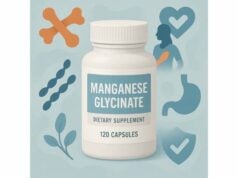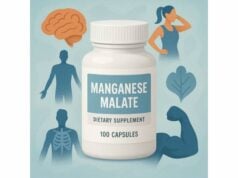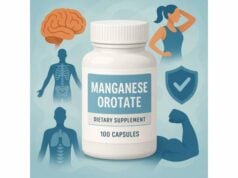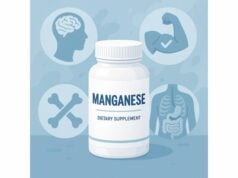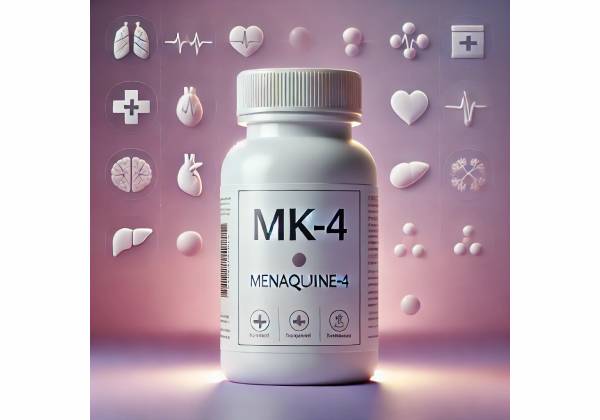
Melting the noise around vitamin K into something practical, menaquinone-4 (MK-4) stands out for one reason: it is the form your tissues preferentially convert to, then use to activate vitamin-K-dependent proteins. Those proteins—such as osteocalcin in bone and matrix Gla-protein in blood vessels—require vitamin K to switch “on.” When they are carboxylated and active, they help mineral go where it should (bone) and not where it shouldn’t (soft tissue). Clinically, MK-4 has a long history in Japan at a pharmacologic dose for osteoporosis, while lower, nutrition-level intakes appear to support bone metabolism markers. Compared with the longer-lasting MK-7, MK-4 has a shorter half-life but broad tissue distribution. As a fat-soluble nutrient, it is best taken with meals and often alongside calcium and vitamin D when bone health is the goal. This guide explains how MK-4 works, what benefits are realistic, who might consider it, how to dose and time it, and what side effects or interactions to watch—so you can make informed, safe choices.
Key Insights
- Supports bone protein activation and may reduce fracture risk at 45 mg/day in specific clinical contexts.
- May help maintain lumbar spine BMD; evidence for vascular benefits is promising but not definitive.
- Typical supplement range: 1–5 mg/day; prescription trials used 45 mg/day (15 mg three times daily).
- Avoid if you use warfarin unless your prescriber closely manages dose and monitoring.
Table of Contents
- What is MK-4 and how it works
- What benefits does MK-4 have
- How to take MK-4 for best results
- MK-4 vs MK-7 and vitamin K1
- Safety, side effects, and who should avoid
- What the evidence says overall
What is MK-4 and how it works
MK-4 is a short-chain form of vitamin K2 (menaquinone) also known as menatetrenone. It differs from vitamin K1 (phylloquinone) and longer-chain K2 vitamers (like MK-7) by the length of its isoprenoid side chain—four isoprene units for MK-4. That seemingly small structural detail shapes how the body transports, stores, and uses the molecule.
A central fact about MK-4 is that your body can make it locally: tissues convert other dietary vitamin K forms (including K1 and longer-chain K2s) into MK-4. This conversion involves removing the original side chain to form menadione (vitamin K3) as an intermediate, then adding MK-4’s characteristic geranylgeranyl side chain via the prenyltransferase UBIAD1. The result is that MK-4 becomes the predominant vitamin K in certain extrahepatic tissues—brain, pancreas, arterial wall, and reproductive organs—suggesting a targeted biological role. Practically, this explains why MK-4 shows up in tissues even if you eat mostly K1-rich foods like leafy greens.
What does MK-4 actually do? Vitamin K’s hallmark action is as a cofactor for gamma-glutamyl carboxylase, the enzyme that carboxylates specific proteins so they bind calcium. In bone, MK-4 helps activate osteocalcin, involved in aligning mineral with the collagen matrix. In blood vessels and cartilage, it supports carboxylation of matrix Gla-protein (MGP), a potent inhibitor of unwanted calcification. When these proteins are undercarboxylated, bone may be less well mineralized, and vascular calcification risk may be higher. Because MK-4 is readily available in tissues, it is well-placed to keep these proteins active.
Two practical pharmacology points matter to users. First, MK-4 has a relatively short plasma half-life compared with MK-7, which is why clinical protocols using MK-4 often split the dose across the day (e.g., three times daily). Second, being fat-soluble, MK-4 absorption improves with dietary fat and bile flow; taking it with a meal is a simple way to boost uptake.
Finally, MK-4 exists in food (notably animal fats, egg yolk, and some cheeses), but the quantities vary and are generally small compared with supplemental amounts. Endogenous conversion from K1 likely contributes heavily to tissue MK-4, especially in people who eat greens regularly. Still, in specific therapeutic settings such as osteoporosis treatment in Japan, clinicians use pharmacologic MK-4 doses far above diet levels.
In short: MK-4 is the tissue-ready vitamin K that activates key calcium-handling proteins in bone and soft tissues. Your body can make it from other vitamin K forms, but supplementation can raise availability—especially when clinical goals demand consistent, high exposure.
What benefits does MK-4 have
Bone health and fracture outcomes. MK-4’s most established clinical role is in bone. In Japanese trials, a pharmacologic total daily dose of 45 mg (typically 15 mg three times per day) reduced vertebral and, in some populations, non-vertebral fracture incidence and helped maintain lumbar spine bone mineral density (BMD). While not every study showed the same magnitude of benefit and some were open-label, the overall pattern is supportive when MK-4 is used as part of an osteoporosis care plan. These effects are biologically consistent with improved carboxylation of osteocalcin and better incorporation of mineral into bone matrix. For people without diagnosed osteoporosis, the evidence leans toward maintenance of lumbar spine BMD and improved bone turnover markers rather than large BMD gains.
Vascular calcification markers. Vitamin-K-dependent proteins like MGP act as “calcification brakes” in the vasculature when fully carboxylated. Supplementation with vitamin K can lower undercarboxylated MGP (dp-ucMGP), a blood marker of poor vitamin K status in the vasculature. That marker change is encouraging and fits the biological story. However, definitive trials showing that MK-4 supplementation alone reduces clinical cardiovascular events or reverses arterial calcification are limited; benefits should be framed as support for healthy calcification control rather than a proven treatment.
Other tissues and potential roles. Because MK-4 accumulates in extrahepatic tissues, researchers have explored roles in brain health, glucose metabolism, and reproductive function. Mechanistic work suggests MK-4 may influence cell signaling, sphingolipid metabolism, and oxidative stress responses independent of classical carboxylation. Early studies are intriguing—especially tissue-level data showing MK-4 predominance—but human outcome trials are still emerging. For now, any non-bone claims should be considered preliminary.
Who might notice benefits. People with low vitamin K intake, those on low-fat diets with limited greens, or individuals with malabsorption may have suboptimal vitamin K function and see clearer improvements in carboxylation markers when supplementing. Postmenopausal women with osteoporosis represent the group with the strongest MK-4 clinical data at pharmacologic dosing. People already consuming vitamin-K-rich diets might notice smaller changes from low-dose MK-4 alone.
What to expect and when. Changes in carboxylation markers often appear within weeks. BMD changes and fracture benefits emerge over months to years. If you are using MK-4 as part of an osteoporosis plan, the real-world gains tend to track long-horizon outcomes—fewer vertebral fractures and preservation of lumbar spine BMD—rather than rapid symptom changes.
Bottom line: MK-4 is most convincing for bone health when dosed adequately and combined with foundational measures (resistance exercise, adequate protein, calcium, and vitamin D). Its vascular and extra-skeletal roles are mechanistically compelling but not yet established as clinical endpoints in the way bone outcomes are.
How to take MK-4 for best results
Choose your goal, then choose your dose. There are two broad dosing tiers:
- Nutrition-level support (general health): Many supplements provide vitamin K at microgram to low milligram amounts. For MK-4, a common over-the-counter range is 1–5 mg/day. This tier aims to support vitamin-K-dependent protein carboxylation and maintain BMD markers rather than treat diagnosed osteoporosis. Because human trials at these doses are fewer than at pharmacologic levels, set expectations accordingly.
- Pharmacologic therapy (osteoporosis in clinical settings): In Japan, MK-4 (menatetrenone) is used at 45 mg/day, typically 15 mg three times daily with meals. This regimen underpins several fracture-reduction trials and requires clinician oversight, especially to coordinate with other osteoporosis medicines and to monitor coagulation status in relevant patients.
Timing and with-food strategy. Take MK-4 with a meal containing fat to enhance absorption. If using higher doses (≥15 mg/day), split dosing aligns with MK-4’s shorter half-life and helps maintain steadier exposure. A simple pattern is breakfast, lunch, and dinner for the 15 mg TID schedule.
Stacking with other nutrients.
- Pair with vitamin D (typically 800–2000 IU/day depending on status) and dietary calcium (about 700–1200 mg/day from food and supplements combined, individualized to diet and needs). Vitamin D upregulates calcium absorption; MK-4 helps route calcium appropriately.
- Ensure adequate protein (about 1.0–1.2 g/kg/day for older adults unless contraindicated) to support bone matrix.
- Magnesium sufficiency supports vitamin D metabolism; check overall diet quality rather than indiscriminately adding pills.
What if you already take MK-7? You can meet vitamin K needs with either MK-4 or MK-7; they use the same carboxylation pathway. Some users choose MK-4 for tissue distribution and clinical fracture data at 45 mg/day; others choose MK-7 for its long half-life and once-daily simplicity at microgram doses. Combining both is generally acceptable at nutrition-level intakes, but avoid exceeding evidence-based ranges and always consider drug interactions.
Special populations.
- Warfarin users: Do not start or change vitamin K intake without prescriber guidance; consistent intake is crucial, and added vitamin K can reduce warfarin’s effect.
- Pregnancy or breastfeeding: Vitamin K is essential, but supplement choices (form and dose) should be guided by a clinician.
- Malabsorption, bariatric surgery, cholestatic liver disease: Work with your care team; fat-soluble vitamin absorption may be impaired, and dosing may need adjustment.
How long to continue. Bone benefits are long-game outcomes. If you start MK-4 for bone health, plan for at least 6–12 months before assessing BMD trends or fracture outcomes, always as part of a comprehensive plan.
Quality checklist. Select products that disclose form (MK-4/menatetrenone), dose per serving, and third-party testing (purity and potency). Oil-based softgels can aid absorption; powders work well if taken with meals containing fat.
Take-home: match dose to intent, take with meals, pair with vitamin D and adequate calcium/protein, and coordinate with your clinician—especially if you take anticoagulants or osteoporosis medications.
MK-4 vs MK-7 and vitamin K1
Origins and conversions. Vitamin K1 (phylloquinone) is abundant in leafy greens and plant oils. MK-7 and other long-chain menaquinones are concentrated in fermented foods (e.g., natto, certain cheeses). Your tissues can convert multiple dietary K forms into MK-4, likely via a menadione intermediate and UBIAD1-mediated prenylation. This means that even if your diet is K1-heavy, you still end up with MK-4 in tissues.
Half-life and dosing practicalities. MK-7 stays in circulation for days, enabling once-daily microgram dosing to maintain stable blood levels. MK-4 clears more quickly, which is why clinical osteoporosis protocols use divided doses to keep exposure steady (e.g., 15 mg three times daily). For general nutrition support, once-daily MK-4 is reasonable if taken consistently with meals; for pharmacologic aims, split dosing is the norm.
Tissue distribution. MK-4 preferentially accumulates in extrahepatic tissues—brain, pancreas, arterial wall, and reproductive organs—while K1 is preferentially sequestered in the liver for coagulation factor synthesis. MK-7 also reaches extrahepatic tissues, but MK-4’s conversion and retention profile suggest a “default” vitamin K in many tissues.
Clinical evidence profiles.
- MK-4: Specific fracture-reduction data at 45 mg/day in postmenopausal osteoporosis and certain high-risk groups. Marker improvements (e.g., osteocalcin carboxylation) appear at lower intakes but outcome data at low doses are limited.
- MK-7: Robust improvements in carboxylation markers and some BMD support at microgram doses; long-term hard-outcome fracture data are fewer than for MK-4’s 45 mg/day regimen.
- K1: Adequate K1 intake supports overall vitamin K status; it’s essential for hepatic clotting factor activation. Direct fracture-reduction data are mixed, but K1 can contribute to osteocalcin carboxylation.
Choosing between them.
- If your priority is ease and once-daily dosing, MK-7 appeals.
- If you’re in a clinical osteoporosis pathway where menatetrenone is part of a prescriber-directed regimen, MK-4 is the form and 45 mg/day is the dose studied for fracture endpoints.
- If you’re optimizing a food-first approach, emphasize leafy greens (K1) and fermented foods, knowing tissues will still generate MK-4 from what you eat.
Compatibility and stacking. It’s acceptable to obtain vitamin K from a mix of diet, MK-4, and MK-7 at nutrition-level doses. Where high doses are used (MK-4 at 45 mg/day), keep your total vitamin K intake consistent and coordinated with your care team.
Bottom line: all three paths (K1, MK-7, MK-4) can support vitamin-K-dependent protein activation. MK-4’s distinct features are tissue conversion and the existence of pharmacologic-dose fracture data; MK-7’s distinct features are convenience and sustained blood levels.
Safety, side effects, and who should avoid
General safety. Vitamin K has a strong safety record. Unlike many fat-soluble vitamins, no tolerable upper intake level has been set for natural forms (K1, MK-4, MK-7) in healthy adults, and adverse effects are rare at customary supplement doses. Gastrointestinal upset can occur in sensitive individuals, especially when starting high doses without food. Allergic reactions are uncommon.
The anticoagulant exception. Warfarin and related vitamin K antagonists directly oppose vitamin K’s action. Adding or changing MK-4 intake can lower your INR and reduce anticoagulant effect. If you use warfarin, do not start MK-4 without prescriber approval; if approved, your healthcare team will typically adjust warfarin and increase INR monitoring during the transition. Direct oral anticoagulants (DOACs) do not target vitamin K, but you should still consult your clinician before significant supplement changes.
Other medications and conditions.
- Bile-acid sequestrants (e.g., cholestyramine), orlistat, certain antibiotics, and fat-malabsorption disorders can reduce vitamin K absorption; dosing or timing may require adjustment.
- Liver disease and biliary obstruction may impair fat-soluble vitamin handling.
- Post-bariatric surgery patients can be at risk of fat-soluble vitamin insufficiency; involve your bariatric team.
Pregnancy and breastfeeding. Vitamin K is essential, and infants receive prophylaxis at birth to prevent vitamin-K-deficiency bleeding. For the parent, stick to prenatal-appropriate products and avoid high-dose MK-4 unless your clinician recommends it for a specific, documented indication.
Surgery. Because vitamin K affects coagulation pathways, inform your surgical team about any MK-4 supplements well in advance of a procedure. Do not self-stop warfarin or self-start MK-4 around surgery without explicit medical guidance.
Underlying bleeding and clotting disorders. People with clotting factor deficiencies or thrombotic disorders should only consider MK-4 under specialist care.
Quality and contamination risks. Choose brands that use third-party testing and clearly state the form (menatetrenone) and exact dose. Be cautious of “megadose” blends that stack multiple K forms without a medical reason. Consistency is more important than sheer dose in most non-pharmacologic contexts.
When to seek medical advice. New bruising, bleeding, black or tarry stools, sudden shortness of breath or chest pain, or severe headache are medical emergencies—seek care immediately. If you are on any anticoagulant or antiplatelet therapy, discuss MK-4 with your clinician before starting.
In everyday practice, MK-4 is well-tolerated, with the warfarin interaction being the key safety caveat. Most other considerations are about absorption, dose appropriateness, and coordination with your broader care plan.
What the evidence says overall
Mechanisms are strong and consistent. Across animal models, tracer studies, and human tissue analyses, multiple dietary K forms convert to tissue MK-4, which then supports gamma-carboxylation of vitamin-K-dependent proteins. This mechanistic clarity—conversion via menadione, UBIAD1 involvement, and tissue-level MK-4 predominance—underpins MK-4’s biological relevance.
Bone outcomes carry the most clinical weight. Randomized trials—especially from Japan—tested 45 mg/day menatetrenone and reported lower fracture incidence and maintenance of lumbar spine BMD in postmenopausal osteoporosis and selected high-risk groups. Not every study was blinded or positive, but the body of evidence at this dose is meaningful. Systematic reviews pooling vitamin K forms generally conclude that benefits on bone appear to arise from improved carboxylation of osteocalcin and related markers; magnitude of BMD change varies by skeletal site and study design. For people without osteoporosis, MK-4 may primarily improve biochemical markers and help preserve BMD rather than produce large gains.
Cardiovascular claims remain provisional. Vitamin K supplementation improves vascular vitamin K status markers (e.g., dp-ucMGP), and undercarboxylated MGP correlates with calcification risk. However, large, long-term studies tying MK-4 supplementation to fewer cardiovascular events or clear regression of calcification are not yet definitive. It is prudent to present vascular benefits as support for healthy calcification control, not a guaranteed disease-modifying effect.
Dosing clarity differs by goal.
- For clinical osteoporosis therapy, the evidence-anchored dose is 45 mg/day menatetrenone in divided doses, typically prescribed and monitored.
- For general support, 1–5 mg/day MK-4 is commonly used in supplements and may improve carboxylation markers, especially when diet is low in vitamin K. Strong fracture-endpoint data at these lower doses are limited.
Choosing MK-4 vs MK-7 vs K1. Rather than framing it as a competition, consider practicality and evidence. MK-7 offers once-daily convenience at microgram doses and solid marker improvements. MK-4 offers tissue conversion relevance and fracture data—but at pharmacologic dosing. K1 remains pivotal for hepatic clotting factor activation and contributes to overall vitamin K sufficiency.
How to apply the evidence.
- Anchor bone health plans in diet, vitamin D, calcium, resistance exercise, and—when indicated—prescription osteoporosis medications.
- Use MK-4 thoughtfully: low-to-moderate doses for general vitamin-K support, or 45 mg/day under supervision when fracture reduction is the goal.
- Mind the warfarin exception and maintain consistency in intake.
Overall, MK-4 is a credible, biologically coherent tool for bone health, with the strongest clinical case at supervised, pharmacologic dosing and a supportive, mechanistic case at nutrition-level intakes. As higher-quality, longer-duration trials accumulate—especially on cardiovascular endpoints—our understanding of MK-4’s broader clinical value will sharpen.
References
- The biological responses of vitamin K2: A comprehensive review 2023 (Systematic Review)
- Multiple Dietary Vitamin K Forms Are Converted to Tissue Menaquinone-4 in Mice 2022
- Effects of vitamin K supplementation on bone mineral density at different sites and bone metabolism in the middle-aged and elderly population: a meta-analysis and systematic review of randomized controlled trials 2024 (Systematic Review)
- Vitamin K2 (menatetrenone) effectively prevents fractures and sustains lumbar bone mineral density in osteoporosis 2000 (RCT)
- Vitamin K – Health Professional Fact Sheet 2021 (Guideline/Reference)
Disclaimer
This guide is educational and does not replace personalized medical advice. Vitamin K can interact with anticoagulants such as warfarin; never start or change MK-4 without your prescriber’s guidance if you use these medicines. Dosing for osteoporosis (e.g., 45 mg/day menatetrenone) should be supervised by a qualified clinician and coordinated with your overall treatment plan. If you have a bleeding or clotting disorder, malabsorption, liver disease, are pregnant or breastfeeding, or are scheduled for surgery, seek medical advice before using MK-4.
If you found this article useful, please consider sharing it on Facebook, X, or your favorite platform, and follow us for future updates. Your support helps us continue producing careful, people-first health content.

